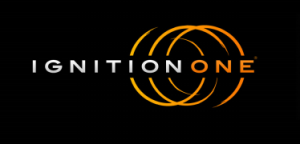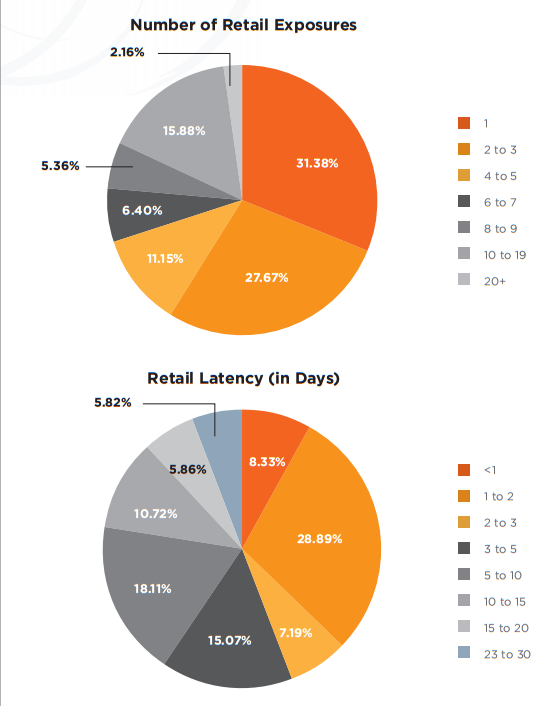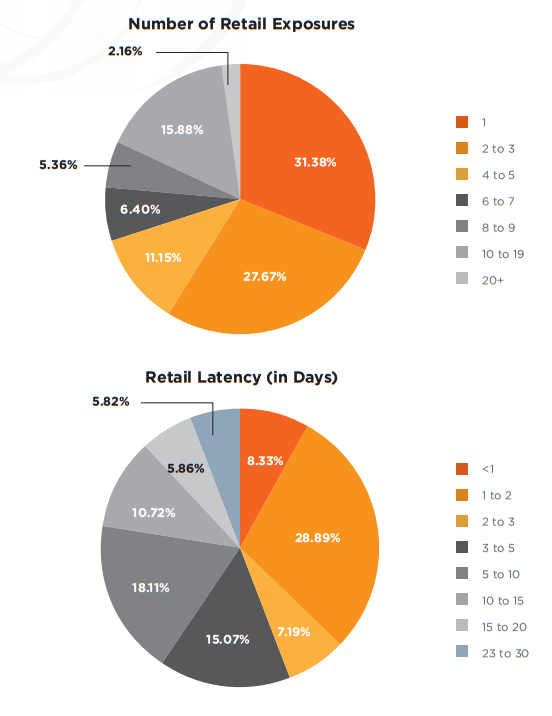Research Study: Attribution & Conversion Path Insights for Retail & Travel
by Romany Reagan on 18th Jul 2012 in News


Digital marketing company IgnitionOne released a research study yesterday showing the effect of media types and exposure paths on the speed of conversion and on the average order value (AOV).
In this report, IgnitionOne applied their attribution analysis to examine the conversion paths and latency (the amount of time between the first exposure and when the conversion occurred) for two important verticals: Travel and Retail Data from US and European companies were pulled to contribute to this report over a two month period.
Roger Barnette, President of IgnitionOne, comments: “By better understanding how different media interact and assist along the path to making a purchase, marketers can more efficiently leverage advertising dollars. These types of insights are possible when marketers take advantage of advanced attribution models and move away from last-click models.”
Samuel Watts, Associate Director of Data & Analytics, Starcom MediaVest Group, weighs in: "We use IgnitionOne data for a few of our clients and basically agree with this study as we've seen similar dynamic across our travel and retail clients. This strengthens our belief that within click-based channels there tends to be very little cross-channel interaction. For us, the interesting stuff is in the nitty gritty granular detail, looking at keyword-level or ad group-level within PPC. I do think that by focusing on just the three channels of seo, ppc and display there can be some interesting cross-channel interactions missed. For example we see much larger cross channel-interactions between display and things such as affiliates and price comparison sites, particularly for travel.
"One other point is we believe display should not be viewed as one bucket - you have to segment your display to get real insight - the role and impact of display will vary massively dependent on whether it is prospecting vs retargeting or brand vs dr or network buys vs data driven RTB buys - that's where the real interest is for us."
Research Study: Attribution & Conversion Path Insights for Retail & Travel
TRAVEL
Travel purchasers saw on average 5.6 media exposures before converting with an average latency of 13.2 days. These media exposures came from an average of 1.7 channels. 51% of transactions included exposures from multiple channels, requiring de-duping of credit.
TRAVEL PATH DETAILS
The research shows that organic search is a very important channel for travel, but it does not exist on its own.
Organic search is most often the last exposure before a conversion in multi-channel paths. However, when
conversion paths that end in organic begin with a paid search click, the conversions result in the highest
average order value (AOV). And while organic almost always closes the multi-channel path, another channel
will have generated the initial interest that drove the user to search for that particular brand term immediately
prior to conversion. From an AOV standpoint, paid search is the key driver in getting customers to spend
more. Paths that start with paid search and end with organic are by far the most common paths and nearly the
highest AOV. The reverse (organic to paid search) is less common, but results in the highest AOV of all multichannel paths.
Display advertising has its place for the travel marketer, but it is more successful as a part of a multi-channel
path. A display click achieves 20% higher AOV and 38% more purchases when it is the last exposure of a multichannel path, compared with being the only channel in the conversion funnel. It works very well following paid search, resulting in a 28% higher AOV (compared to display-only paths). These users are also 72% more likely to purchase again, compared to display-only paths, and 52% more likely to purchase again, compared to paidsearch-only paths .
The exposure combination in multi-channel paths that most quickly converts for travel marketers starts with a display view and ends with organic search. This path converts in an average of 10 days, which is half of the total average, despite its lower AOV. The slowest path begins with email and ends with display, taking an average of 49 days and has a low AOV. In fact, most of the slowest paths tend to involve email, regardless of whether it is at the beginning or end of the sequence — these paths also have a 36% lower AOV when compared to other multi-channel paths.
RETAIL
Similar to travel customers, retail purchasers have an average of 5 media exposures from an average of 1.6 channels. However, retail consumers have fewer conversion paths that cross multiple channels (44%). The most striking difference lies in latency, where retail conversions occur twice as fast as travel (6.5 days) on average.
RETAIL PATH DETAILS
Like travel, organic search closes retail conversions most often in multi-channel paths, but unlike travel, display
is a common final exposure as well. Display also helps to drive higher spending for retail with the highest AOV
shown when display clicks close a conversion path .
The most common path for retail starts with paid search and ends with organic search. However, this produces
a lower-end AOV compared to the average of multichannel paths. In turn, this path has the shortest latency of
4.5 days compared to the average of 10.3 days for all multichannel paths.
Display continues to show its importance for retail by driving the highest AOV in multi-channel paths. Multichannel paths starting with paid search and ending with display yield the highest AOV, while the reverse
(display to paid search) is second highest (though with a much shorter latency).
This strength of display advertising continues in single-channel paths. When display is the only channel involved, it results in a higher AOV when compared to a single-channel path of paid search. However, even
a paid-search-only path is higher than average compared to all retail paths. Lower-than-average AOV paths
tend to involve affiliate or email clicks.
AdvertiserattributionDisplaySearch










Follow ExchangeWire